Uterine Fibroids and Fertility: Everything You Need to Know
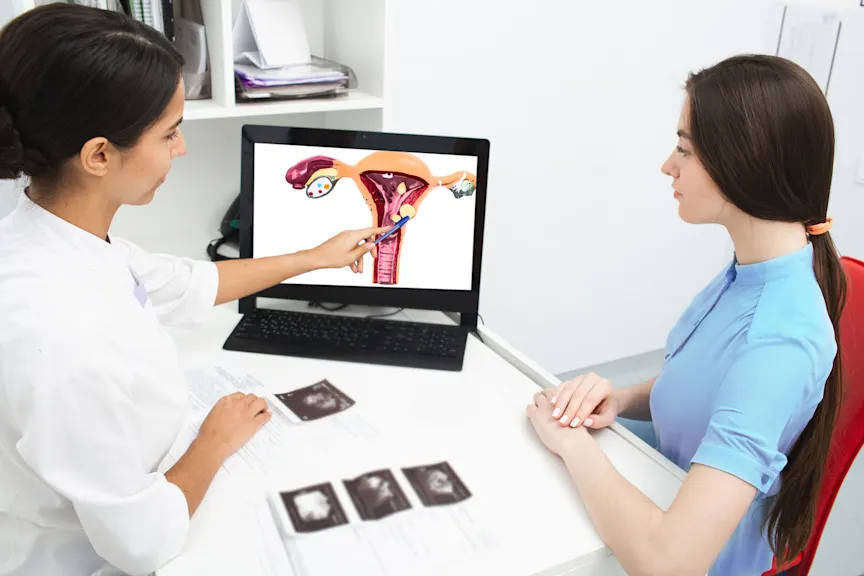
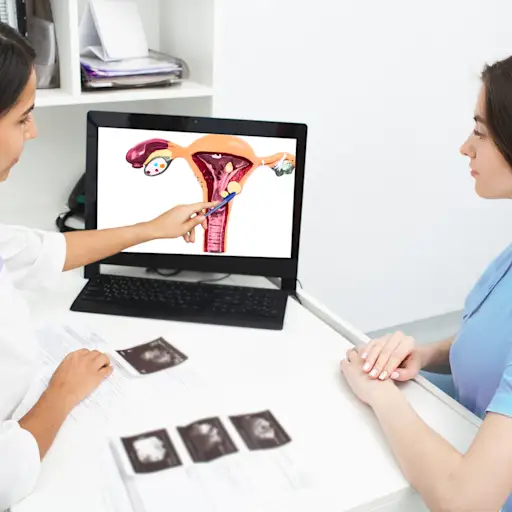
如果你有uterine fibroids and want to get pregnant, you’re probably more than a little concerned about what the former means for the latter. “Just having fibroids doesn't necessarily mean that a patient is going to have difficulty getting pregnant,” says Latasha Murphy, M.D., a gynecologist and surgeon at the Institute for Gynecologic Care at Mercy Medical Center in Baltimore. Still, “fibroids probably account for 3% of infertility cases.” So when should you worry? Let’s walk through how uterine fibroids can affect fertility.

子宫肌瘤的诊断
总体而言,根据美国生殖医学学会的数据,5%至10%的努力孕妇的妇女患有肌瘤。巴尔的摩约翰·霍普金斯医学生殖科学与妇女健康研究部主任詹姆斯·塞加尔斯(James Segars,M.D.)说,第一个问题是诊断的延迟。On average, women wait 3.6 years before getting help, even after experiencing severe symptoms, and many don’t seek help at all because they think heavy bleeding, menstrual cramping, bloating, and bladder problems are nothing to worry about, according to a national survey in the美国妇产科杂志。

Fibroid Signs to Look For
“A lot of women have what they think to be normal menses, but they’re not,” Dr. Segars says. Because of the crossover of symptoms, many women don’t realize they have fibroids until they try to get pregnant. And at least 50% of women with uterine fibroids don’t have any symptoms at all, according to the National Institutes of Health, adding to the difficulty of getting a diagnosis and treatment. It’s important to understand your risks and get proper screening, Dr. Segars says, especially if you’re trying to get pregnant. Risk factors include age, race, obesity, and family history.

年龄,种族和家族史如何影响肌瘤赔率
Fact: The older you are when trying to conceive, the more likely you’ll have fibroids. By age 50, at least half of all women have fibroids. Being African American also affects your chances of having uterine fibroids during your prime reproductive years: By age 35, 60% of African American women have uterine fibroids. But only 40% of Caucasian women have uterine fibroids by that age. Genetics also play a major role in who develops fibroids. If you have a family history of fibroids, hysterectomy, or abnormal menses, you may be at risk, Dr. Segars says.
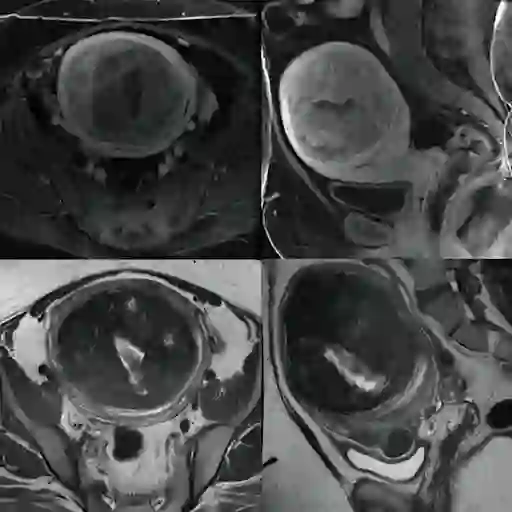
Fibroid Location Impacts Fertility
When it comes to fertility, where fibroids are located makes the biggest difference. “Fibroids are like real estate. It’s location, location, location,” says Dr. Segars. Doctors define uterine fibroids, also known as myomas or leioymyomas, based on where they occur in your body: Submucosal myomas occur in the lining of the uterine cavity; intramural myomas are located in the uterine wall; and subserosal fibroids are found outside the uterine wall. (Note: You can have more than one fibroid, and in more than one location.)
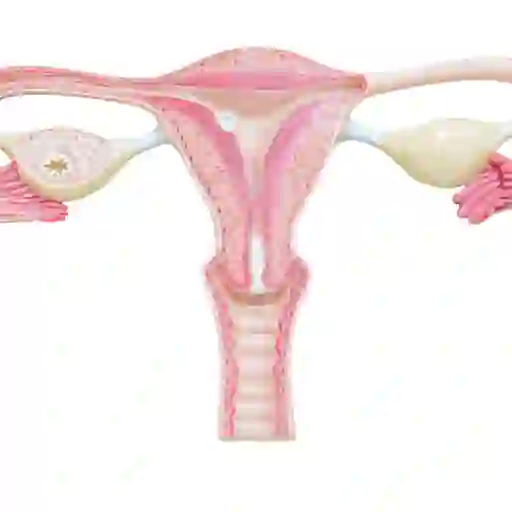
When Fibroids Are Submucosal
Segars博士说,只有5%的肌瘤是粘膜粘膜,但这些肌瘤对于生育力最有问题。他说。“铃铛的底面是子宫。肌瘤是拍手。当肌瘤位于子宫腔中时,它会弄乱胚胎植入物的能力。”在这些情况下,流产是共同的结果。

When Fibroids Are Intramural
塞加尔斯博士说,想想壁内肌瘤 - 位于子宫壁的肌肉层中的那些肌瘤,例如土壤中的岩石。它们可以扩大和扭曲子宫和子宫颈,阻止精子或胚胎的运动。他说:“这种肌瘤不仅可以防止植入其所在地点,而且会感染和攻击子宫,因此整个子宫现在是另一种'土壤'。”“这会使整个花园的肥沃减少。”去除壁内肌瘤有点棘手 - 它可能会导致子宫壁的疤痕,这可能会影响未来的妊娠,如果子宫壁被损害,您将需要剖腹产的任何未来分娩。

壁内肌瘤导致阻塞
塞加尔斯博士说,子宫壁可能会影响生育能力的另一种邪恶方式是阻止输卵管,但您可能没有意识到这一点。他说,如果有完全的障碍,那么怀孕的机会降至零。塞加尔斯博士说:“它们可以阻止一个或两个试管……这不一定可以在超声波上检测到。”要查看您的试管是否被肌瘤阻塞,您需要盐水超声图或滞后图(HSG),该过程使用放射性染料突出显示障碍物并检查正常流向子宫。

When Fibroids Are Subserosal
现在有了一些好消息:如果您患有子毛膜肌瘤(或居住在子宫墙外的肌瘤),那么您的怀孕挑战可能会更少。Segars博士说,肌瘤肌瘤占女性经历的子宫肌瘤的55%,但这些肌瘤似乎并没有干扰生育能力。取而代之的是,如果您担心怀孕,您的医生可能会建议您独自留下这些肌瘤。根据《科克伦评论》的报道,将其删除并不能对生育能力产生任何积极影响。

肌瘤大小如何影响生育能力
疯狂但真实:肌瘤可以从葡萄干(或较小)到西瓜的大小。大小可以在防止或破坏怀孕方面发挥作用,尤其是与位置有关。例如,据美国生殖医学学会称,直径大于6厘米的壁内肌瘤可能会干扰怀孕。但是,即使较小的肌瘤也会影响妊娠。塞加尔斯博士说:“这可能是半厘米,但是如果它是铃铛和毛衣(粘膜粘膜)肌瘤,它可以像宫内节育器一样。”
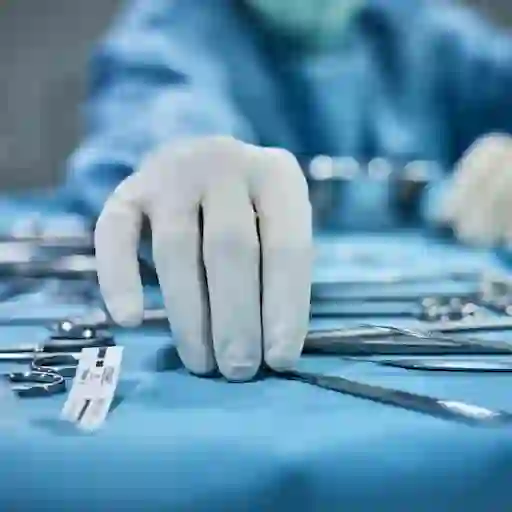
To Remove or Not to Remove
It’s a myth that all fibroids need to be removed in order to get pregnant. “It depends on the location of the fibroid,” says Jeannette Lager, M.D., a gynecologist and associate director of the UCSF Center for Endometriosis in San Francisco. For instance, women who have submucosal fibroids that affect fertility or cause repeated miscarriages, surgically removing the fibroid by myomectomy is the preferred treatment, according to a Cochrane review. And many doctors recommend removing intramural fibroids greater than 5 cm, as these often distort the uterine cavity.
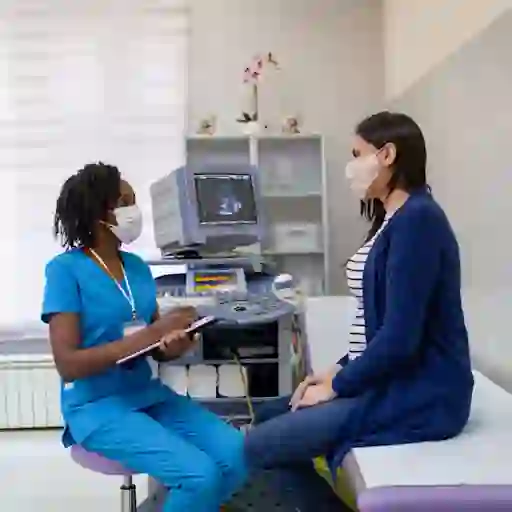
Alternative Fibroid Treatments
For women who undergo fibroid surgery, Dr. Segars recommends trying to get pregnant within six months. “The reason for that is if we take that fibroid out and she waits, she may have a recurrence in the same area or even a different area of the uterus so that she may need a second surgery,” he says. Surgery’s not the only option, however. There are other treatment options that can reduce the size of fibroids prior to pregnancy, Dr. Segars says, such as gonadotropin-releasing hormone (GnRH) antagonists that help reduce fibroid size.
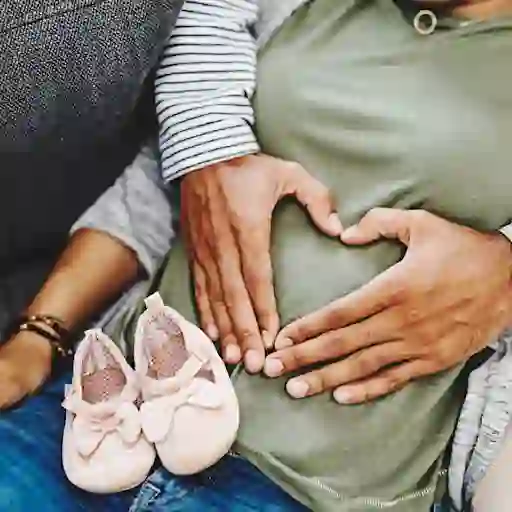
How Fibroids Affect Pregnancy
An estimated 2% to 12% of pregnant women have fibroids. Sometimes, but not always, those fibroids can grow during pregnancy, usually within the first 12 weeks. “Fibroids outside of infertility can have an impact on the pregnancy itself,” Dr. Murphy says. “Fibroids can sometimes grow during pregnancy, making the pregnancy very painful. It can sometimes cause miscarriages. So, it may not prevent the patient from getting pregnant, but can cause an early delivery of that pregnancy or early loss potentially of a pregnancy.”

有时,怀孕有助于肌瘤
怀孕can also be beneficial to fibroids. “It helps them to regress,” Dr. Segars says. “At the end of pregnancy, there’s a wave of apoptosis and cell death that sweeps through the uterus for things like fibroids.” The regression isn’t permanent. “If you have fibroid disease, it’s something you’re probably going to be dealing with from now until you get to menopause,” Dr. Segars says. Because when you reach that age, the hormones that fed the fibroids start to diminish in the body and eventually the fibroids do, too.
肌瘤的通用性:国家儿童健康与人类发展研究所。(2018年。)“子宫肌瘤。”https://www.nichd.nih.gov/health/topics/uterine
Fibroid Symptoms:Journal of Clinical Medicine。(2021.) “Conservative Management of Uterine Fibroid-Related Heavy Menstrual Bleeding and Infertility: Time for a Deeper Mechanistic Understanding and an Individualized Approach.”https://www.ncbi.nlm.nih.gov/pmc/articles/PMC8509802/
Fibroids and Infertility Cases:Diagnostics。(2021.) “Uterine Fibroids and Infertility.”https://www.ncbi.nlm.nih.gov/pmc/articles/pmc8391505/
Time to Diagnosis:美国妇产科杂志。(2013年。)“子宫平滑肌瘤的影响:一项全国对受影响妇女的调查。”https://www.ncbi.nlm.nih.gov/pmc/articles/PMC4167669/
患有肌瘤的女性数据:临床妇产科。(2008.) “Asymptomatic Uterine Fibroids. Best Practice & Research.”https://pubmed.ncbi.nlm.nih.gov/18375184/
African American Women with UF:Fertility and Sterility。(2013年。)“无症状的年轻女性(18-30岁)的肌瘤患病率和超声检查结果的种族差异:一项试点研究。”https://www.researchgate.net/publication/236053283_racial_differences_in_fibroid_prevalence_prevalence_and_ultrasound_findings_in_asymptomatic_youngotomatic_young_young_women_18-30-30_years_years_years_years_adpilot_pilot_pilot_pilotot_pilot
Location of Fibroids:最新。(2021.) “Uterine fibroids (leiomyomas): Epidemiology, clinical features, diagnosis, and natural history.”https://www.uptodate.com/contents/uterine-fibroids-leiomyomas-epidemiology-clinical-features-diagnosis-and-natural-history
Amount of Women With Fibroids Trying to Get Pregnant:American Society of Reproductive Medicine. (2015.) “Fibroids and Fertility.”https://www.reproductivefacts.org/news-and-publications/patient-fact-sheets-and-booklets/documents/fact-sheets-and-info-booklets/fibroids-and-fertility/
Cochrane关于去除肌瘤的评论:The Cochrane Database of Systematic Reviews。(2020.) “Surgical Treatment of Fibroids for Subfertility.”https://www.ncbi.nlm.nih.gov/pmc/articles/PMC6989141/
As a health journalist, Rita Colorito has covered topics ranging from anxiety disorders to the zika virus. She specializes in writing about cancer, heart disease, health care disparities, and mental health. A breast cancer

